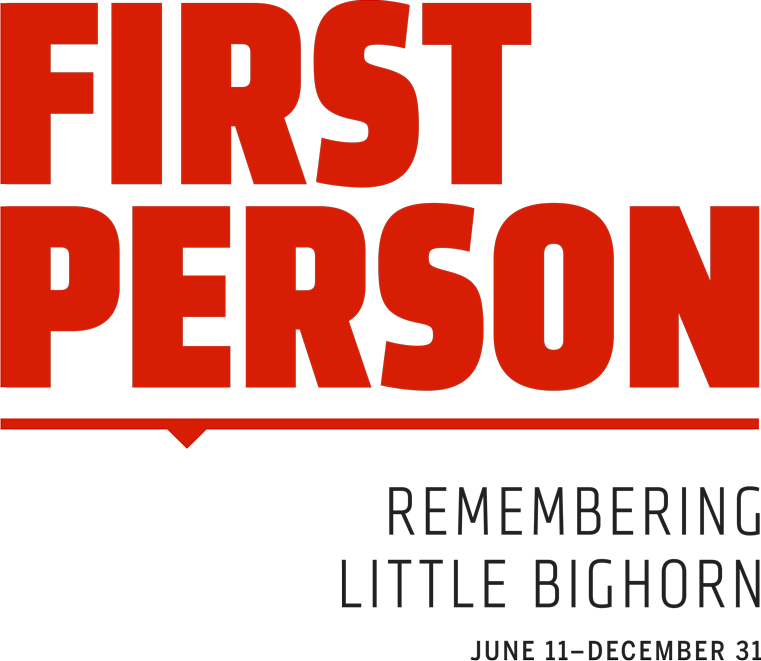

Riderless Horses
More than a dozen riderless Army horses with saddles are depicted on the left side of the muslin. Standing Bear said "...I noticed there were the cavalrymen's horses running away after breaking loose..." This comment was recorded by John G. Neihardt in 1931 and published in The Sixth Grandfather (1985), edited by Raymond J. DeMallie.
Bare Lance
Two Lakota men riding near the Army horses wear eagle feather headdresses with long trailers and hold crooked lances in their right hands. The lances are mostly likely those of the Sotkà Yuhà (Bare Lance) warrior society. These long, curved lances are wrapped in otter skin and adorned with eagle feathers.
Deep Ravine
Several soldiers as well as a Native warrior (perhaps a Hunkpapa warrior named Red Face) are shown down in a trench known as the Deep Ravine. This is a geographic feature of the landscape and is referenced by many Native and non-Native participants in the Battle as a place where several soldiers died.
Counting Coup
A member of the Čanté T'inzá (Brave Heart) warrior society uses his eagle feather lance (with alternating light and dark feathers) to strike one of the soldiers. This brave deed, known as "counting coup," required that a warrior get close enough to strike and thus humiliate the enemy, and then retreat unharmed.
Success in Battle
Many warriors and their horses are decorated for battle. Some horses, like one near the left corner of the village, have their tails tied with red wool cloth and eagle feathers. This horse also has a scalplock (a small red ball with dark hair attached) dangling from its mouth, indicating that an enemy was killed in previous battle.
'No Retreat' Sash
To the right of the dismounted soldiers is a warrior wearing a long red sash decorated with eagle feathers which connects him with the Miwátani Society. To prove their bravery in battle, members of this society used the sash to stake themselves to the ground, staying to fight to the death.
Encampment
In the lower right corner is the encampment of Lakota and Cheyenne allies. They were gathered together for the annual communal buffalo hunt and the Sun Dance, a religious ritual of sacrifice, thanksgiving, and renewal. Tracks indicate that warriors rode their horses into battle, while the women stayed in camp to protect children and older people.